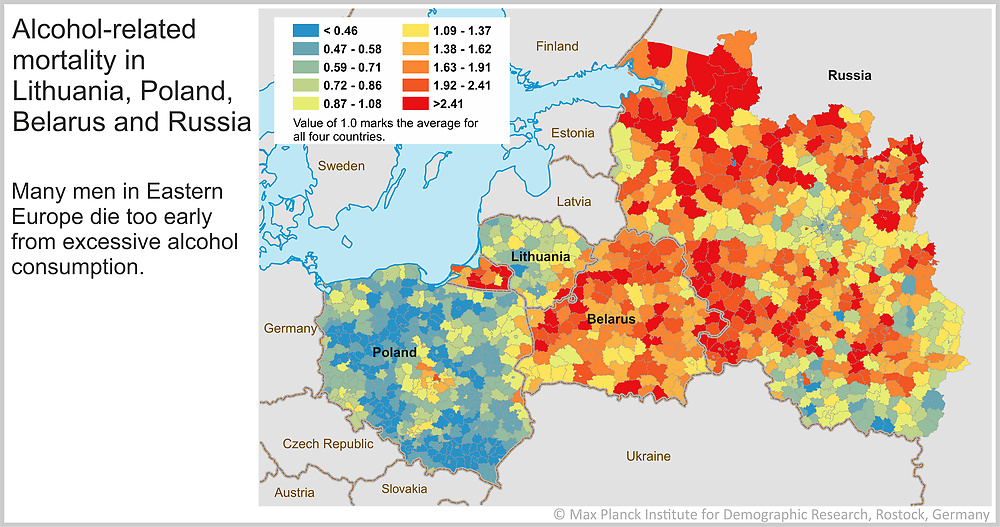January 28, 2020 | News | Alcohol-related Mortality
It Remains Similar Across Borders in Eastern Europe

Many men in Eastern Europe die early from diseases caused by excessive alcohol consumption. © istockphoto.com/PaulBiryukov
Excessive alcohol consumption is the major cause of high and early mortality among men in Eastern Europe. Cross-border similarities of alcohol-related mortality might be rooted in shared history and traditions.
Habits do not suddenly change at national borders. This is particularly true of men's drinking habits in four post-communist countries: Lithuania, Poland, Belarus and Russia. “These countries provide an interesting context for research, as they have a common past, and yet remain quite distinct now”, says Pavel Grigoriev, research scientist at the Laboratory of Demographic Data of the Max Planck Institute for Demographic Research.
He and an international team of researchers explored patterns of alcohol-related mortality among men across the selected Eastern European countries and published their findings in the journal Drug and Alcohol Review.
“It is very likely that the way alcohol-related mortality is spread across the four neighboring countries has historical roots”, says Pavel Grigoriev. “However, other factors also seem to play an important role in shaping the geographical distribution of alcohol-related mortality in the region. Among them are contemporary differences in socioeconomic conditions, selective migration from peripheral to regions in the center of each country, and cross-border smuggling of illegal alcohol”, he adds.
From very high mortality in northwestern Russia to low mortality in southern Poland
In order to investigate mortality variation across the four countries, the team of researchers assessed the official mortality data for 1179 districts and cities over the period from 2006 to 2014. As their main mortality measure they used the Standardized Mortality Ratio (SMR), in which they compared the average mortality in all four countries to the mortality in every single district. Any SMR value on the map above 1 indicates elevated mortality as compared to the average (SMR=1.0) of the four countries whereas an SMR below 1 indicates mortality below the average.

Alcohol-related mortality for men 20 to 64 years old across the combined territory of Belarus, Lithuania, Poland, and European Russia. © MPIDR
As one can see on the map, alcohol-related mortality of men tends to decline from very high levels in northwestern Russia to low levels in southern Poland without sudden changes around national boundaries. This observation supports the hypothesis about the spread of alcohol consumption habits from the European part of Russia to the other countries, which appears to have started more than a century ago. Polish and Lithuanian regions seem to be less affected by this, while most of Belarus and Russia report extreme levels of alcohol-related mortality.
Within each country there are areas with extremely high alcohol-related mortality. These territories are located in northwestern and western Russia, eastern and northeastern Belarus, southeastern Lithuania and eastern and central Poland. In the past, these areas were under the strong influence of the Russian Empire. The south of Poland, on the other hand, for a long time was a part of the Austrian Empire; presumably, it has developed different drinking habits. Today, one of the lowest alcohol-related mortality rates in the entire region under investigation is found here.
Original Publication
Grigoriev, P., Jasilionis, D., Klüsener, S., Timonin, S., Andreev, E., Meslé, F.:
Spatial patterns of male alcohol‐related mortality in Belarus, Lithuania, Poland and Russia. Drug and Alcohol Review (2020). DOI: https://doi.org/10.1111/dar.13037